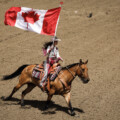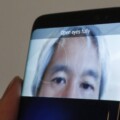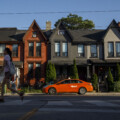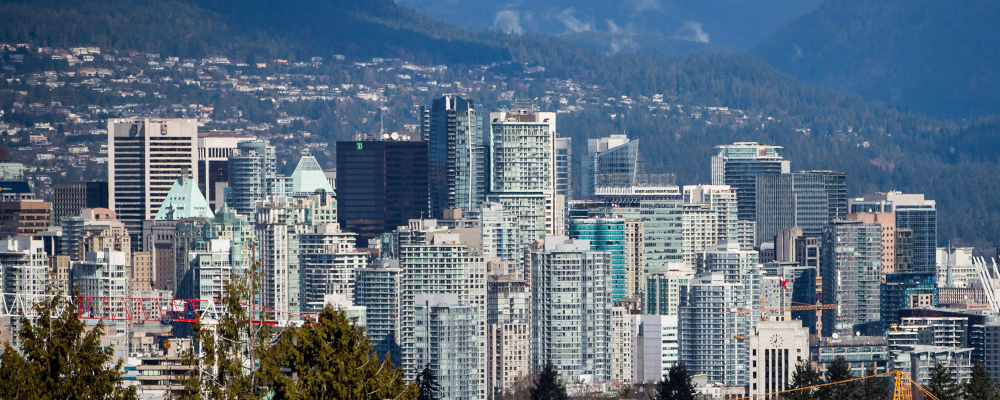Throughout history, cities have taken the brunt of pandemics. From Athens in 430 BCE to Venice when the Yersinia pestis—the Black Death—killed a third of Europe’s population in the early fourteenth century. It was London’s turn in 1665 when the pestis returned.
The tragedy for Canada is that we were warned and didn’t prepare. In 2003, Toronto was the centre of a SARS outbreak, the largest outside China, but it quickly went down the memory hole. We failed to learn that cities can make us sick. When they do, they can change the very nature of how we live and work.
But how much will cities change now that technology and mobility make it easier to opt-out and work remotely, destroying the social vitality that urbanist Jane Jacobs so cherished?
That’s the question that David Cutler and Edward Glaeser try to answer in their book, Survival of the City: Living and Thriving in an Age of Isolation, published by Penguin Press. Both are professors of economics at Harvard University, with Glaeser specializing in cities and Cutler in health policy. Together they bring their knowledge and insights on cities and health to unravel what they call the “demons of density.”
Edward Glaeser has often said that cities are the greatest inventions ever created. Density was the secret formula that has allowed us to prosper. Cities are places—as science writer Matt Ridley describes—where “ideas have sex.” Or as the 19th-century economist Alfred Marshall once said about the mysteries and magic of industrial clustering, “the mystery of the trade become no mystery but are, as it were, in the air.”
Only by bringing people closer together can knowledge formulate and spread. In the book’s subtitle, Living and Thriving in an Age of Isolation, we might live, but we assuredly won’t thrive if we’re separated by “social distancing.” Working close together, we’re not only more productive, but we also produce higher quality work. Research shows that we’re more productive when our desks are closer together than when we work in separate offices. Even chess players make more bad moves when forced to play online, while scholars publish better quality papers when they collaborate. Academic journals now tend to carry more multi-authored papers than they did in the past.
In the sciences, long gone are the days of the sole thinker writing up her research papers. The authors of Survival of the City prove that point. One could even argue that the vaccines to fight the coronavirus were produced quickly because thousands of scientists worked face-to-face in labs. Zoom is great for many things, but the less distance, the better for complex ideas. As the authors say, “try teaching someone the fundamental theorems of algebra over email.”
Forty years ago, in his bestselling book The Third Wave, the futurist Alvin Toffler predicted that information technology and computers would empty office buildings as workers move out of cities. As Toffler predicted, many more of us work from home or off-sight in Starbucks. But as the labour force grew, even more workers moved back into those office buildings fueling more demand for condos closer to work. Could Toffler finally be proven right, not by the spread of technology but by the spread of viruses?
Whether Toffler is right will be determined by two factors in competition; centripetal forces drawing workers into large cities—such as higher-paying jobs and the amenities of living in big cities—and centrifugal forces pushing people out, such as high housing costs, congestion, and crime. The stronger force between the two will determine whether cities thrive or decline. The pandemic falls into this latter category, increasing the negative externalities of living and working in close proximity. In the mid-twentieth century, cheap transportation and poor housing infrastructure drove people into the suburbs. Eventually, better jobs, long commutes, and high gas prices drove them back into the city.
History shows that despite plagues and pandemics, cities are resilient and adapt to changes by stemming the spread of disease with sanitation infrastructure and public health policy such as widespread vaccination. Even with those improvements, the pandemic has exposed the disparities between rich and poor—the rich are insulated and the poor are isolated.
In the U.S.—and assuming these numbers aren’t much different in Canada—Glaeser and Cutler point out about 66 percent of employed adults with advanced degrees were telecommuting during the pandemic, compared to only five percent who hadn’t finished high school. Education has bifurcated society, making the less educated more vulnerable to the disease as they work outside the home. This was no different during the Black Death when the only products moving from the Far East to cities such as Venice were luxury goods transported by the poor to the rich. During the current pandemic, not only did lower-income workers lose more jobs, they suffered from higher rates of smoking, obesity, and depression, increasing their chances of ending up in ICUs. To paint a bleaker picture, rich kids got more education over the past two years while the poor got less. One estimate in Survival of the City is that ten percent of inner-city kids in Los Angeles and Boston dropped out of virtual education, risking another lost generation. Projecting that throughout the country, you’re now left with an educational pandemic to worry about.
There’s much to learn from this book as the authors take us through the devastation of past pandemics and the poor planning for this one. They end with several recommendations to prepare for the next pandemic, including a NATO-type program for health to monitor outbreaks around the world. Anything would be better than the current World Health Organization that has compromised itself by politics and the sensibilities of not offending China.
The authors lament that Americans have too little public health that stifled the country’s chances to control the pandemic once it started to spread. Canada suffers from the reverse; a health care system that allows little private participation in health care that would take some pressure off the public sector. With so few beds in hospitals and ICU units, the only way to save our health care system is by keeping us apart while crippling the economy. It’s shameful that a country that was home to Banting and Best and gave the world insulin no longer has the capacity to produce its own vaccines. Now we are left waiting in long lines in the dead of winter for vaccine shots and virus tests. Survival of the City is a place to start thinking about what our future should look like.
Recommended for You

Falice Chin: The ‘wild and weird’ Calgary Stampede

‘A celebration of the spirit of Alberta’: Ryan Hastman on the political, economic, and cultural importance of the Calgary Stampede

Michael Geist: Children accessing porn is a problem, but government-approved age verification technologies are not the answer

Daniel Zekveld: Age verification for pornography is not government overreach




